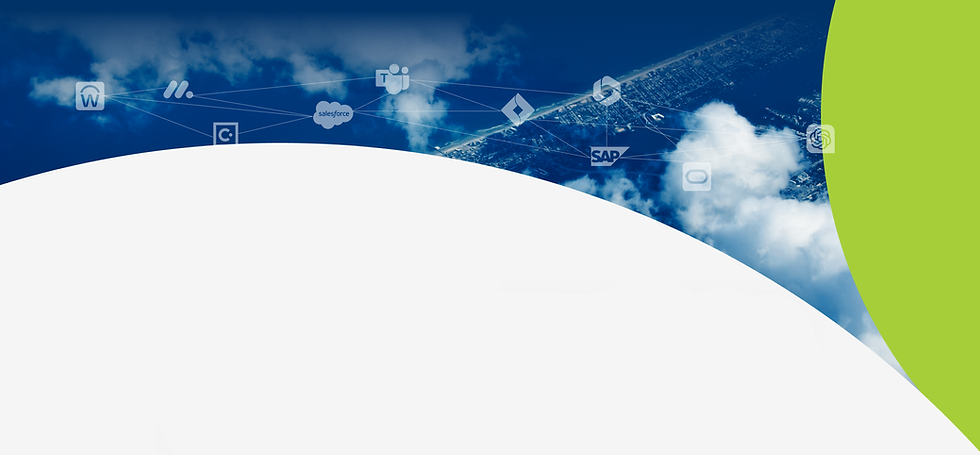


Tsippi Dach
Short bio about author here Lorem ipsum dolor sit amet consectetur. Vitae donec tincidunt elementum quam laoreet duis sit enim. Duis mattis velit sit leo diam.
Tags
Share this article
4/16/21
Published
Tsippi Dach, Director of Communications at AlgoSec, explores the relationship between NetOps and SecOps and explains why they are the perfect partnership
The IT landscape has changed beyond recognition in the past decade or so. The vast majority of businesses now operate largely in the cloud, which has had a notable impact on their agility and productivity. A recent survey of 1,900 IT and security professionals found that 41 percent or organizations are running more of their workloads in public clouds compared to just one-quarter in 2019. Even businesses that were not digitally mature enough to take full advantage of the cloud will have dramatically altered their strategies in order to support remote working at scale during the COVID-19 pandemic.
However, with cloud innovation so high up the boardroom agenda, security is often left lagging behind, creating a vulnerability gap that businesses can little afford in the current heightened risk landscape. The same survey found the leading concern about cloud adoption was network security (58%).
Managing organizations’ networks and their security should go hand-in-hand, but, as reflected in the survey, there’s no clear ownership of public cloud security. Responsibility is scattered across SecOps, NOCs and DevOps, and they don’t collaborate in a way that aligns with business interests. We know through experience that this siloed approach hurts security, so what should businesses do about it? How can they bridge the gap between NetOps and SecOps to keep their network assets secure and prevent missteps?
Building a case for NetSecOps
Today’s digital infrastructure demands the collaboration, perhaps even the convergence, of NetOps and SecOps in order to achieve maximum security and productivity. While the majority of businesses do have open communication channels between the two departments, there is still a large proportion of network and security teams working in isolation. This creates unnecessary friction, which can be problematic for service-based businesses that are trying to deliver the best possible end-user experience.
The reality is that NetOps and SecOps share several commonalities. They are both responsible for critical aspects of a business and have to navigate constantly evolving environments, often under extremely restrictive conditions. Agility is particularly important for security teams in order for them to keep pace with emerging technologies, yet deployments are often stalled or abandoned at the implementation phase due to misconfigurations or poor execution. As enterprises continue to deploy software-defined networks and public cloud architecture, security has become even more important to the network team, which is why this convergence needs to happen sooner rather than later.
We somehow need to insert the network security element into the NetOps pipeline and seamlessly make it just another step in the process. If we had a way to automatically check whether network connectivity is already enabled as part of the pre-delivery testing phase, that could, at least, save us the heartache of deploying something that will not work.
Thankfully, there are tools available that can bring SecOps and NetOps closer together, such as Cisco ACI, Cisco Secure Workload and AlgoSec Security Management Solution. Cisco ACI, for instance, is a tightly coupled policy-driven solution that integrates software and hardware, allowing for greater application agility and data center automation. Cisco Secure Workload (previously known as Tetration), is a micro-segmentation and cloud workload protection platform that offers multi-cloud security based on a zero-trust model.
When combined with AlgoSec, Cisco Secure Workload is able to map existing application connectivity and automatically generate and deploy security policies on different network security devices, such as ACI contract, firewalls, routers and cloud security groups. So, while Cisco Secure Workload takes care of enforcing security at each and every endpoint, AlgoSec handles network management. This is NetOps and SecOps convergence in action, allowing for 360-degree oversight of network and security controls for threat detection across entire hybrid and multi-vendor frameworks.
While the utopian harmony of NetOps and SecOps may be some way off, using existing tools, processes and platforms to bridge the divide between the two departments can mitigate the ‘silo effect’ resulting in stronger, safer and more resilient operations.
We recently hosted a webinar with Doug Hurd from Cisco and Henrik Skovfoged from Conscia discussing how you can bring NetOps and SecOps teams together with Cisco and AlgoSec. You can watch the recorded session here.
Related Articles
Navigating DORA: How to ensure your network security and compliance strategy is resilient
Network Security
Mar 19, 2023 · 2 min read
2024 in review: A transformative year for AlgoSec in secure application connectivity
Network Security
Mar 19, 2023 · 2 min read

Speak to one of our experts




